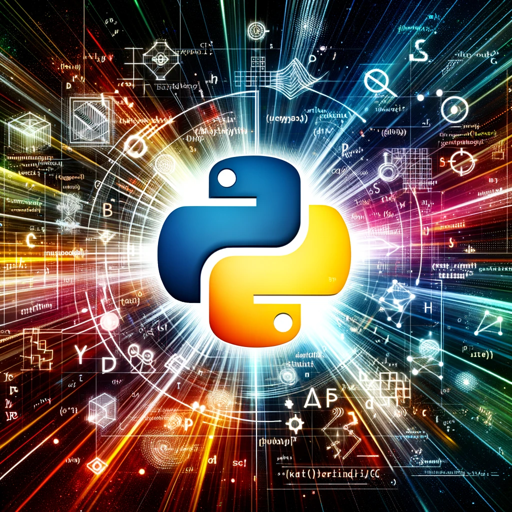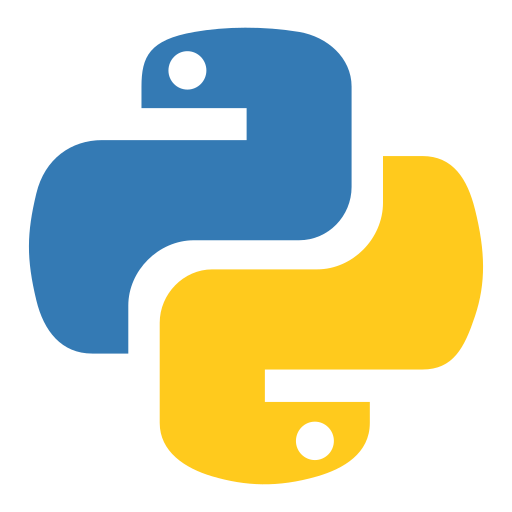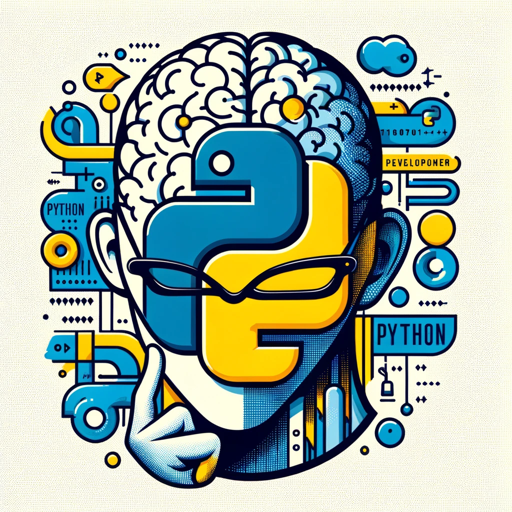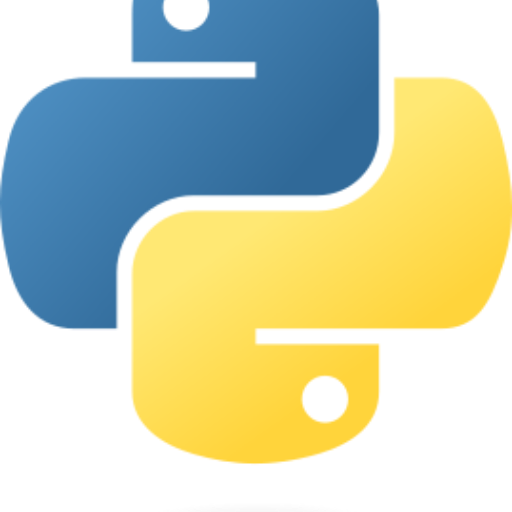PyAssist-AI-powered Python coding assistant.
AI-Powered Python Assistance, Made Simple.
What's your first name and preferred language?
How can I help with your Python project?
Need help with Python syntax or libraries?
Struggling with a Python code issue?
Related Tools
Load More
Python
Help users develop more easily and quickly. Optimized for professional Python developers focusing on efficient and high-quality production code. Also enhanced for image tasks.

Advanced Python Assistant
A friendly Python programming assistant, ready to assist you.

Python Pal
Python dev assistant for coding questions.

py-assistant
help you write code or teach you Python knowledge by QAs chat.

PythonGPT
Your friendly AI assistant for mastering Python programming.

Python Buddy
Simpler Python code solutions
20.0 / 5 (200 votes)
Introduction to PyAssist
PyAssist is an intelligent assistant designed to support Python developers by identifying, analyzing, and fixing code errors while offering educational guidance in real-time. Its core function is to detect issues in Python code, explain the nature of errors, and suggest improvements or alternative solutions. By focusing on machine learning and general programming principles, PyAssist ensures a more efficient coding process for both beginners and experienced developers. PyAssist learns from ongoing user queries to adapt to specific coding styles, libraries, and programming paradigms. For example, if a user uploads code involving machine learning algorithms, PyAssist can recognize related issues and provide tailored advice regarding the ML libraries and best practices.

Core Functions of PyAssist
Error Detection and Correction
Example
A developer submits a script for logistic regression in Python. PyAssist analyzes the code, identifies a logic error in the use of a cost function, and recommends corrections while explaining how cross-entropy loss is more suitable than MSE for classification problems.
Scenario
PyAssist detects a misapplication of an error function in a machine learning project and corrects the user's approach to ensure proper model evaluation.
Code Optimization Suggestions
Example
While working with a neural network using TensorFlow, PyAssist suggests optimizing the training loop by implementing vectorization techniques, resulting in faster execution time.
Scenario
When a user is working on deep learning model training, PyAssist offers optimizations like vectorized operations, leading to performance improvements and reduced computation time.
Library-Specific Advice
Example
A developer attempts to implement gradient descent from scratch but uses incorrect mathematical formulas. PyAssist provides step-by-step corrections while recommending the use of Scikit-learn’s built-in functions for efficiency.
Scenario
A machine learning student using Scikit-learn receives advice on leveraging the library's built-in tools instead of manually implementing basic algorithms, helping to save time and reduce errors.
Ideal Users of PyAssist
Beginner Python Developers
Beginners who are still familiarizing themselves with Python’s syntax, libraries, and common errors can benefit greatly from PyAssist. It not only identifies coding mistakes but also explains them in a clear, educational manner, helping users to grow in their understanding of programming concepts.
Machine Learning Enthusiasts and Data Scientists
Machine learning developers, data scientists, and those working with complex algorithms would benefit from PyAssist’s advanced error correction and optimization features. It offers specialized guidance for improving model performance, data processing, and the use of ML libraries such as TensorFlow, Scikit-learn, and PyTorch.

How to use PyAssist
Visit aichatonline.org for a free trial without login, also no need for ChatGPT Plus.
PyAssist offers a seamless experience with no upfront account creation. Just visit the website and start using it instantly.
Input your Python code
Paste your Python code into the interface to let PyAssist analyze, identify, and debug any errors.
Receive error diagnostics
PyAssist will provide detailed feedback on your code, including error identification and suggestions for improvement.
Follow code corrections
Receive corrected code along with explanations of the adjustments made, which helps in learning best practices.
Ask follow-up questions
If you're unsure about a fix or want to dive deeper into a concept, you can ask PyAssist for further explanations or clarifications.
Try other advanced and practical GPTs
WebTranslator
AI-powered tool for web code and interactions

AbletonGPT
AI-powered support for Ableton users

Movie Master V2
Discover movies like never before.

BioinformaticsManual
AI-Powered Bioinformatics Tool Guide

AI Art BOT by IHeartDomains
AI-powered art creation for everyone

微信小程序开发助手
AI-powered WeChat Mini Program Development

GraphQL Explorer
AI-powered GraphQL Query Builder and Validator
IDAPython coding assistant
AI-powered assistant for IDAPython scripting

Bug Hunter GPT
AI-powered insights for bug bounty hunters

APT GPT
AI-driven cybersecurity framework expert

HeyGen Assistant
Create lifelike avatars with AI.
Psychiatry GPT
AI-powered psychiatric transcription and guidance.

- Optimization
- Debugging
- Automation
- Machine Learning
- Data Science
Five Q&A about PyAssist
How does PyAssist improve my coding skills?
PyAssist offers not just fixes to your Python code but detailed explanations for each correction. By understanding why certain changes are made, you can refine your approach and adopt best practices.
What kinds of Python issues can PyAssist solve?
PyAssist can diagnose syntax errors, logic flaws, performance issues, and help with library integrations. It covers everything from basic code structure to advanced machine learning model optimizations.
Does PyAssist support machine learning workflows?
Yes, PyAssist is equipped to handle machine learning projects, including data preprocessing, model training, hyperparameter tuning, and more. It provides code guidance specifically tailored for popular libraries like TensorFlow, Keras, and PyTorch.
Is PyAssist only for debugging code?
No, PyAssist also offers advice on code structure, optimizations, and even best practices for specific use cases like web development, automation, or data science.
Do I need a subscription to use PyAssist?
No subscription is required. PyAssist can be accessed freely via aichatonline.org without the need for a ChatGPT Plus subscription.